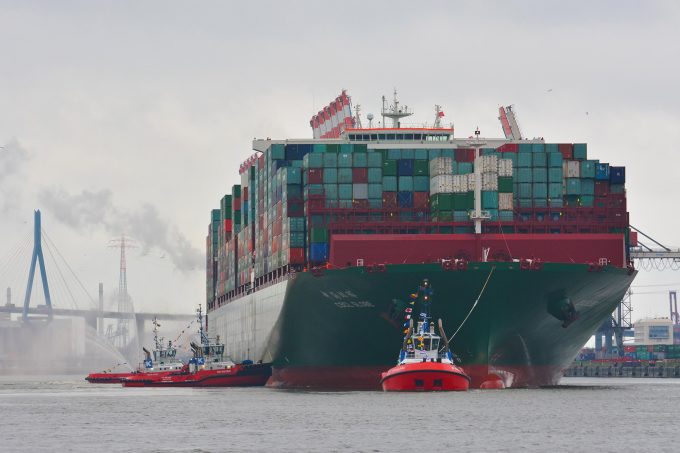Liners unveil Asia-Europe FAK price hikes to arrest steady rate decline
Container shipping lines are looking for a hike in Asia-Europe spot freight rates, announcing a ...

The launch of the new vessel-sharing alliances has increased capacity on the Asia-Europe, transpacific and transatlantic trades by 5%, compared with pre-1 April, according to new research from Alphaliner.
A total of 8.37 million teu across 913 vessels is now available on east-west alliance deepsea strings, said the analyst. This compares with 7.94m teu on 879 ships operated by the four old groupings.
And Alphaliner said there had been a “significant” upsizing in the vessels deployed, with 207 ships of 13,300-21,000 teu now in service on the routes (180 previously). This includes 56 ultra-large container vessels (ULCVs) in excess of 18,000 teu, five more than in March, one of which is the recently delivered Madrid Maersk, the largest containership afloat, in terms of capacity.
As a result of more ULCVs running between Asia and North Europe, the average ship size on the trade has increased to 15,005 teu, against 14,767 teu in August 2016. According to Alphaliner, the two new alliances, together with the 2M + HMM, operate 197 vessels, seven more than the four alliances deployed in March, increasing Asia-Europe capacity to 2.85m teu from 2.73m teu.
On the Asia-US west coast route, there are two extra ships in service, taking the total to 232, which is actually five below last August – although capacity has actually increased, albeit by just 2,000 teu a week.
However, on Asia-US east coast, another 18 vessels have been deployed, making a total of 199, and capacity has jumped by nearly 200,000 teu.
The new alliance networks are still bedding in and Alphaliner believes it will be some time before all the nominated vessels are on their designated routes. It said: “The transition to the new alliances began on 1 April but it will take more than two months before the last vessels from the old services are phased out.”
In the interim, carriers have been very active in the charter market, fixing ad hoc vessels to cover the gaps in their networks.
This demand has brought a welcome boost to the embattled charter market, with all sectors showing impressive gains in daily hire rates in past weeks, although from hitherto rock-bottom levels.
Indeed, broker reports seen by The Loadstar suggest that hire rates for the beleaguered panamax sector, of 4,000-5,100 teu ships, have more than doubled in the last two months to around $10,000 a day. This has encouraged owners to reactivate idled ships and has led to a last-minute halt to several scrapping deals.
However, Alphaliner has a cautionary note for owners: once transition into the new alliance networks are resolved, it believes some 20 ships of 4,000-7,000 teu will be surplus to requirements “without any foreseen employment so far”.
Comment on this article